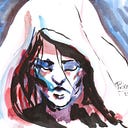Member-only story
Children of the Corn and Maize God
Stephen King
Children of the Corn
I read the short story a long, very long time ago. Short stories for Stephen King are a good genre when he wants to have density, a swift and rapid plot, simple characterization. His normal genre requires hundreds of pages, at times many hundred pages and one thousand is not an unreachable goal for him. This short story has had a very special history since from a short story adapted to the screen as a normal long feature film, it then developed into so many sequels and more recently even a TV series, that I turned curious and wanted to see what all that was about. So, I am going to follow the tracks of those perverse children and see where it is going. It is not the only case of a novel or short story by Stephen King becoming a whole set of adaptations with sequels and further developments using the same characters and situations. At the same time Stephen King is not the only author who is that successful with film and TV series makers, though the most famous series of films in that line, I mean Nosferatu, Dracula, Tarzan (this last one seems to have gone out of business in more recent years if not decades), or Frankenstein, can spread over a century or so and are more centered on the character himself, and adventures or developments that have little to do with the original piece of literature. In the…
